Bacon Rides may be done for 2010, but what about a ride out to Shenandoah, Iowa for Mexican fare and Coronas?
My bike riding brother, who went from 300 pounds to 175 in only 10 months (no joke) by riding bikes, will be in town next week, and I want to show him a good time. I'm planning a Sunday ride out to Shenandoah and back. Of course, you're invited!
With the crisp morning air, autumn leaves, and warm afternoons, this is an awesome time of year for long rides down the Wabash.
Please see this link for more details.
Thursday, October 14, 2010
Wednesday, October 13, 2010
Bike Lift
Phenomenol People Movers:
from WebUrbanist by Delana
16 people liked this
[ By Delana in Architecture & Design, Travel & Places, Urbanism. ]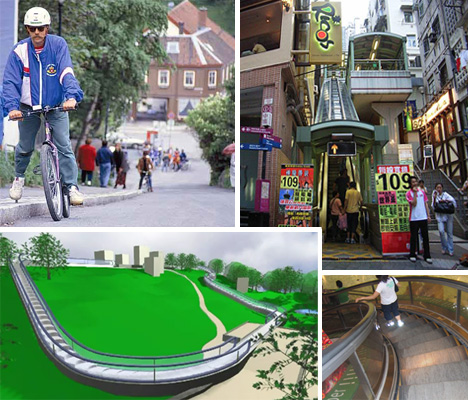
Much to the disappointment of pretty much everyone, we have yet to perfect the science of teleportation and no one has bothered to invent Futurama-type human pneumatic tubes. Until those things become reality, we are stuck walking, biking, or riding almost everywhere. At least these three human transport systems are weird enough to be interesting, which will just have to do for now.
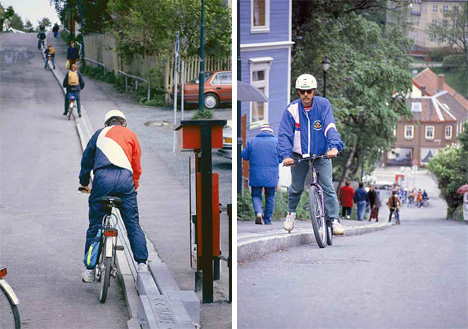
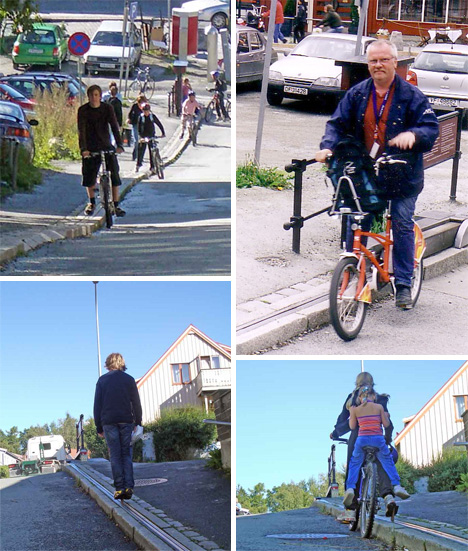
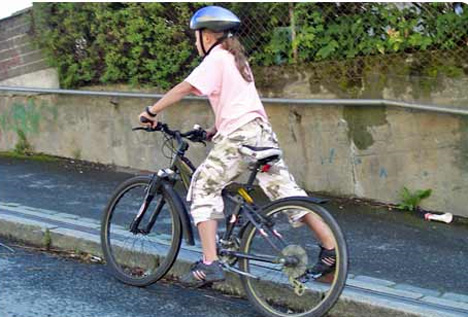
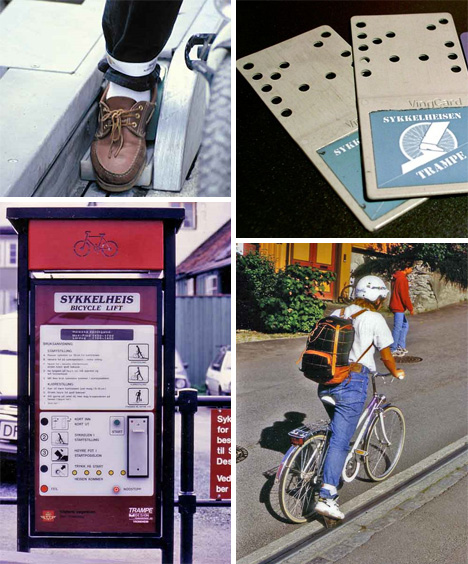
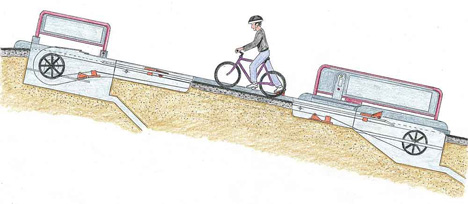

Much to the disappointment of pretty much everyone, we have yet to perfect the science of teleportation and no one has bothered to invent Futurama-type human pneumatic tubes. Until those things become reality, we are stuck walking, biking, or riding almost everywhere. At least these three human transport systems are weird enough to be interesting, which will just have to do for now.
The Trampe Bicycle Lift

(images via: Trampe)
In bicycle-friendly Trondheim, Norway, a curious contraption adorns a steep hill. It is the world’s only functional bicycle lift, designed to help bike riders ascend the hill quickly and easily with a minimum amount of stress on their muscles. Built as a sort of working prototype, the Trampe (meaning “to stomp” in Norwegian) Lift was installed in 1993.
(images via: Trampe)
Inspired by Trondheim’s large student population and very hilly topography, the Trampe’s inventor, Jarle Wanvik, first came up with the bike lift idea in 1992. He envisioned the lift working like a ski lift, taking bikers from the bottom of a hill to the top with a minimal amount of effort. Since Trondheim had recently invested large amounts of money in a number of pro-bicycle city improvements, the Public Roads Administration loved the idea.
(image via: Trampe)
After choosing a manufacturer and working out the details of the plan, Wanvik and the Municipal of Trondheim chose a suitable hill. The hill that would eventually become a bike commuter’s dream and a tourist attraction for the city is located near the town center and leads up to the university campus. The location is perfect for students and commuters alike. Keycard passes for the lift cost 100 Kroner per year for residents, but one-time cards are free for tourists.
(images via: Trampe, Wikipedia)
The bike lift works in a very straightforward way: a cyclist puts his right foot on the starting point with his left foot still on the left bike pedal, then inserts his keycard in the card reader machine. After pushing the “start” button, a footplate emerges behind the right foot and begins to propel the rider up the hill. It looks precarious and tiring, but the trick is to keep the right leg extended behind the body, shift the body weight to the footplate, and lean slightly forward on the bike. Riding the lift in this way, says the manufacturer, prevents any fatigue and makes for a pleasant assisted uphill ride.
(image via: Trampe)
So why isn’t this great idea employed elsewhere in the world? According to the official Trampe website, it’s not for lack of interest by other cities. The idea has been well received by locations all over Europe, Asia and the US, with many cities promising to install one in the future. But before that can happen, the overall bicycle infrastructure has to be ready to support such an endeavor. For many cities, that means installing dedicated bike lanes on the streets before undertaking an ambitious project like a bike lift.
Subscribe to:
Comments (Atom)

